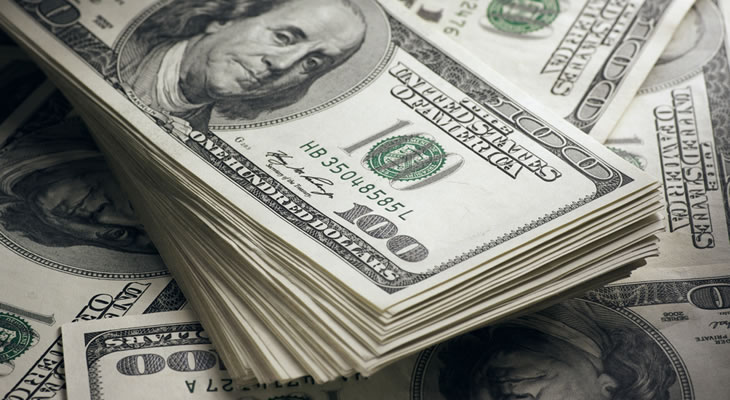Pound US Dollar (GBP/USD) Exchange Rate Dented as Russian Invasion Continues
The Pound US Dollar exchange rate trended down today. Global risk appetite retreated from the markets as the Russian invasion of Ukraine intensified. Investors flocked to the safe-haven ‘Greenback’ in response.
At time of writing the GBP/USD exchange rate is at around $1.3402, roughly -0.2% down from this morning’s opening figures.
US Dollar (USD) Firms as Russia Warns of ‘Precision Strikes’
The US Dollar (USD) climbed against its rivals today amid an intensification of hostilities between Russia and Ukraine. Risk appetite in the markets waned as satellite image showed a large convoy of Russian armoured vehicles approaching Kyiv.
Russian officials have warned that they will soon launch ‘high precision strikes’ against targets in central Kyiv. USD could dip however following reports that a second round of talks between the two countries is set to take place on Wednesday.
Confidence in the US Dollar could falter further as investors pare back their expectations of an aggressive rate hike schedule from the US Federal Reserve. Fed Chair Jerome Powell is due to testify before the US Congress on Wednesday and Thursday. Investors will be watching for hints that the Fed may continue their hawkish stance in the face of geopolitical instability.
Pound (GBP) Dips amid Drive to Safe-Haven Currencies
The Pound (GBP) dropped against its competitors as investors flocked to safe-haven currencies. Risk appetite has retreated as Russia prepares to launch a fresh offensive on the Ukrainian capital of Kyiv.
Investor concerns that the Bank of England (BoE) could pursue a less aggressive schedule of policy tightening may also be limiting bets on Sterling. Central banks across the globe are paring back their previously hawkish rhetoric despite soaring inflation.
GBP could see significant losses underpinned by strong manufacturing growth however. PMI figures from Tuesday showed that the sector grew at its fastest rate since July 2021.
Rob Dobson, Director at HIS Markit, said:
‘Growth was boosted by stronger domestic demand and by firms catching up on delayed work as material shortages and supply chain disruptions started to dissipate. Consumer goods output in particular also benefitted from increased sales due to a further easing of COVID restrictions.’
Dobson also highlighted how data is yet to reflect the impact of the Ukraine-Russia conflict on the sector, and that this could drive prices higher and further disrupt supply chains.


Comments are closed.